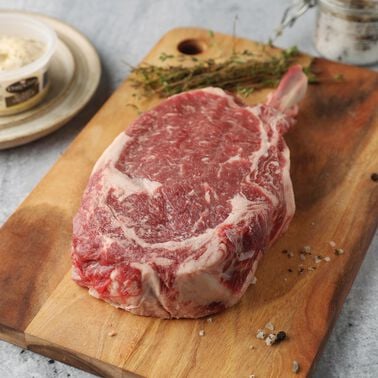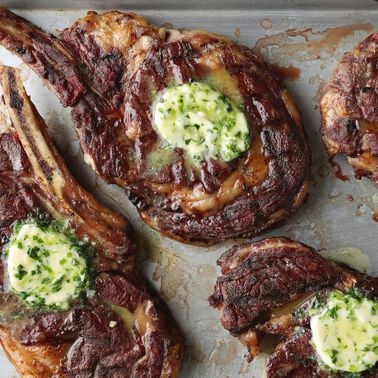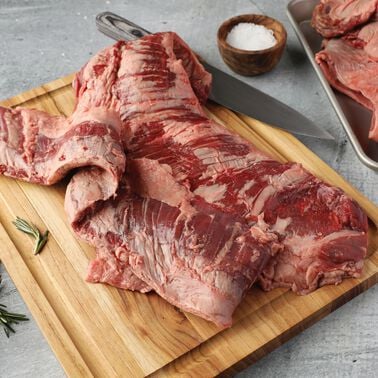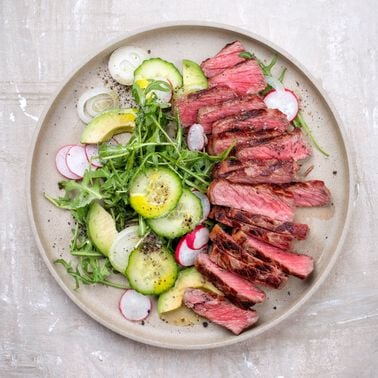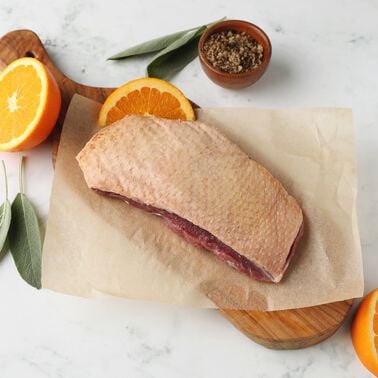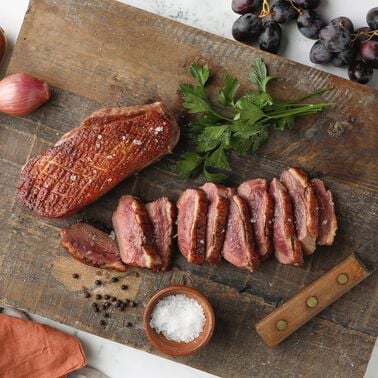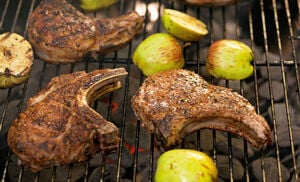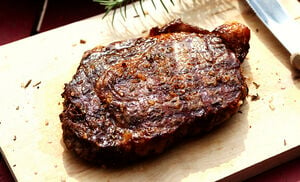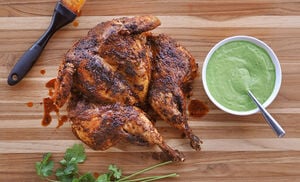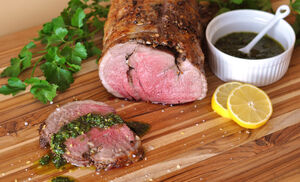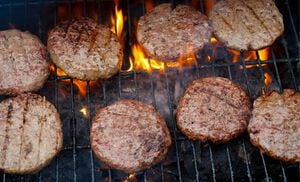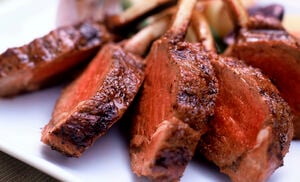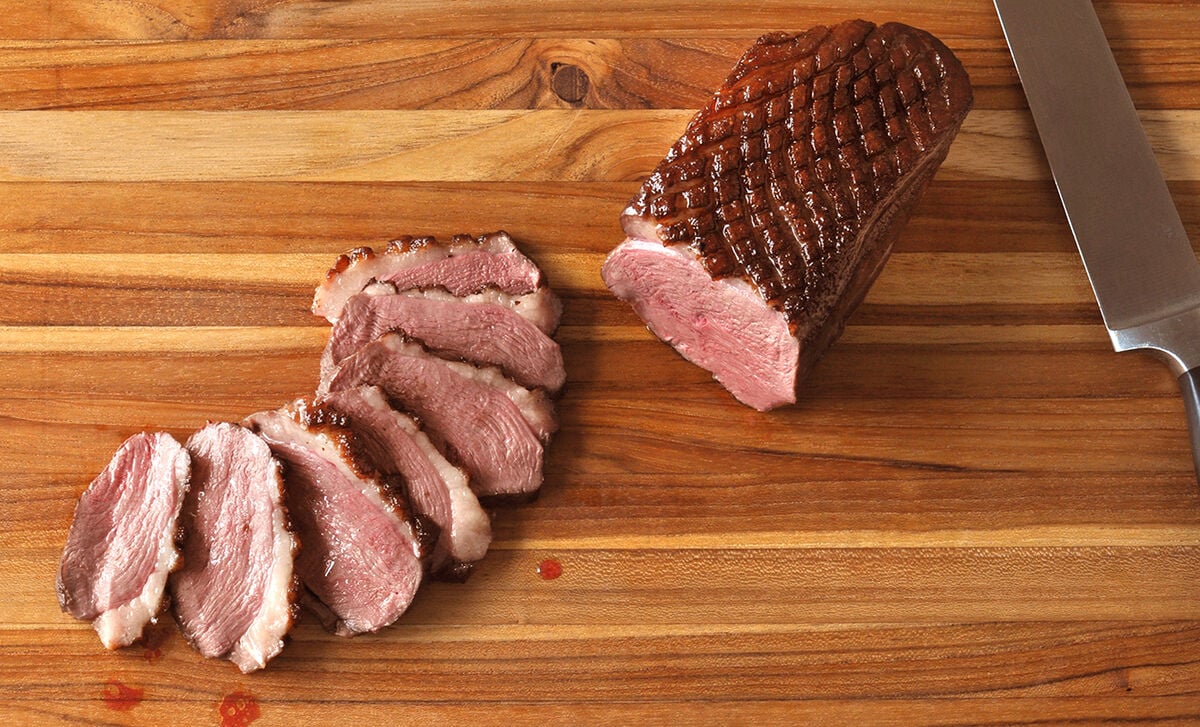
To prevent that kind of suppertime disappointment, here’s what you need to do. Start with proper seasoning (a sprinkle of kosher salt and some freshly ground black pepper do the trick nicely). Cook the meat on a grill or cast iron skillet until it has reached your preferred level of doneness. Then be patient and let the meat rest. Ten minutes on a plate, tented with foil in a nice, warm spot does the job. But why is that rest period so darn important?
When you lay a piece of meat down on a hot surface, the fibers of the meat tighten and the moisture inside that steak or chop that is closest to the heat source is forced away from those tightened fibers and into the center of the cut. When you flip it, the same thing happens to the fibers and the moisture that was once on the reverse side.
At the end of cooking, you have a piece of meat where all the juices have been crammed into a space that is far too small to hold them willingly. When you cut that piece of meat straight off the heat source, those juices are going to seek relief from their tight quarters and escape any which way they can. For the hungry diner who cuts into their steak too soon, this means that they end up with a messy plate and a dry cut of beef. That’s just no fun for anyone.
However, if you let that steak, chop or breast rest for ten minutes, the fibers inside the meat have a chance to relax and reabsorb those internal juices. Once that happens, your meal will be a much more joyful thing to eat and behold.
But how do you know if your meat has rested enough? It’s a good question and one that is mostly easily answered by temperature. When you let your meat cool, you’re looking to have it return to a temperature of around 125° F, at least around the edges. That’s the point as which those fibers have relaxed enough to reabsorb the moisture and won’t release it all over your plate. You can easily test the temperature of your meat with an instant read thermometer. Once it’s back to 125° F, dinner is served.
After that, the only question is how to serve this perfectly cooked piece of meat. We recommend topping your grilled steaks with a pat of truffle butter and serving up some lightly steamed green beans on the side. There’s just nothing better!
